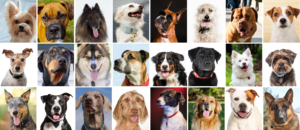Kovács, K., Kis, A., Pogány, A., Koller, D. & Topál, J. (2016). Differential effects of oxytocin on social sensitivity in two distinct breeds of dogs (Canis familiaris). Psychoneuroendocrinology, 74, 212-220. doi: 10.1016/j.psyneuen.2016.09.010
This paper is included because it examines a possible mechanism – metabolizing of oxytocin – which could explain differences in social behavior among dogs and which may extend to such differences among people. Kovács, Kis, Pogány, Koller, & Topál (2016) studied the effects of oxytocin on social cognition in dogs, specifically breed differences on task performance previously used to demonstrate social cognition. Border Collies (N=16, chosen to represent “cooperative workers”) and Siberian Huskies (N=18, selected to represent “independent workers”) served as subjects. No mention was made of how the breed identifications were documented. Moreover, it should be mentioned that such categorizations of breed-specific personality types are by no means settled. Wobber et al. (2009) for example, put Siberian Huskies in the cooperative worker group, and went on to report findings that they were among the more socially responsive to humans. The history of selection for specific behaviors and what, if anything, those behaviors imply regarding general temperament remains largely murky and immersed in folklore.
The dogs were administered either intranasal oxytocin or placebo and were subjected to a series of behavioral tests. The Unreachable food task, Potentially dangerous object task, and Tolerance of prolonged eye contact task were presented in that order, all of which track either frequency or duration of eye contact between dogs and people as a surrogate for social responsiveness. The researchers hypothesized that the different jobs that historical ancestors of these modern breeds were selected for would affect their responses both to the tests in general and to their sensitivity to oxytocin, a chemical the authors expected to facilitate social contact. The results were mixed, with some measures showing differences depending on whether the dog had received oxytocin, which breed he or she represented, or sex. Others showed no differences or statistically insignificant differences or even paradoxical results. On the potentially dangerous object test, for example, oxytocin had the opposite effect on the 2 breeds. Border Collies increased their gaze shifts between their owners and a growling, shrouded box if they had received the oxytocin. Siberian Huskies shifted their gaze less. This suggests that the gaze shifting behavior may be linked to something other than social reassurance, or that oxytocin affects other sorts of emotional responses than the target of the investigation here, among other possibilities, and underlies the complexity of labeling a specific behavior as a surrogate for an aspect of personality.
The authors were cautious in their conclusions, particularly since they could not determine the effect of environmental factors on the behavioral differences, because the owner questionnaires revealed a pattern of pet owners treating the two breeds differently. All of the owners of the Border Collies had participated in regular training classes with their dogs for example, while fewer than half of the Huskies’ owners had, so the Border Collies had had dramatically more learning experiences on interacting cooperatively with their owners.
In addition, there were differences between the breeds in the age of the dogs when purchased by their owners and their socialization history. This is particularly important since the behaviors measured relate to sociability which is known to have critical periods of development at a young age. These socialization history differences highlight the concern that “breed differences” in general may in fact be “owner differences” in husbandry and perception based on their preconceived notions about their pet’s breed. As mentioned earlier, once again the report does not indicate how breed was determined; it is possible that owners reported their dogs’ breeds based on visual identification which is not reliable.
https://doi.org/10.1016/j.psyneuen.2016.09.010
Wobber, V., Hare, H., Koler-Matznick, J., Wrangham, R., & Tomasello, M. (2009). Breed differences in domestic dogs’ (Canis familiaris) comprehension of human communicative signals. Interaction Studies, 10(2): 206-224.
Page last updated July 16, 2019





